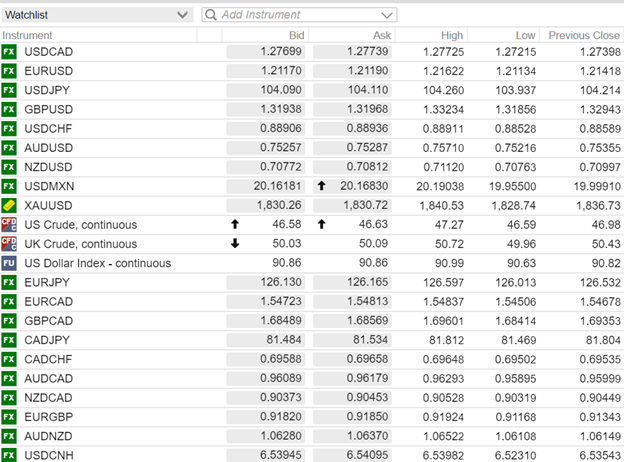
Photo: Nestle
December 11, 2020
USDCAD open (6:00 am ET) 1.2782-86, Overnight Range 1.2722-1.2774
- No-deal Brexit risk soars-GBPUSD sewers
- 219,554 new COVID-19 cases in USA spurs FDA endorsement of Pfizer vaccine
- GBP sewers and US dollar slips in skittish overnight session
FX Ranges at a Glance:

Source: IFXA Ltd/RP
FX Recap and Outlook: It’s just another “Frantic Friday.” Asia equity indexes closed mixed to lower. Japan’s Nikkei 225 fell 0.39% while Hong Kong’s Hang Seng Index rose 0.36%.
European bourses are deep in the red with the German DAX down 1.69%. Gold (XAUUSD) is down 0.64% so far, and crude prices have shed around 1.0%.
The failure of the US Congress to agree on another COVID-19 Relief package in the face of sharply rising new cases is starting to overshadow positive sentiment from vaccine news. The FDA may be ready to approve the Pfizer vaccine, but that isn’t helping anyone today.
GBPUSD’s woes on negative Brexit headlines are taking a toll on the rest of the major G-10 currencies, and the US dollar is bid, compared to yesterday’s NY closing level.
EU Commission President Ursula von der Leyden reportedly told the EU Commission that a no-deal Brexit was the most likely outcome. UK Prime Minister Boris Johnson echoed her remarks. Morgan Stanley analysts predict a 10% drop in the FTSE100 in the event of a no-deal Brexit. GBPUSD peaked at 1.3470 on Wednesday, and it hit 1.3136 today. Prices have recovered somewhat.
EURUSD dropped from 1.2162 to 1.2111 in NY trading, in part because of wide-spread demand for US dollars against the majors. Yesterday, the ECB recalibrated their monetary policies.
They increased the PEPP program, said Pandemic refinancing operations would continue into 2023, and extended TLTRO to June 2012. The news underpinned Euro. Traders ignored ECB President Lagarde’s lame verbal currency intervention during the press conference, as she merely repeated what others have said.
USDJPY is trading in the middle of its 103.94-104.26 range. The currency pair was sold on the back of falling US Treasury yields, and risk-off sentiment.
AUDUSD and NZDUSD retreated from where they closed on Thursday but remained well above Monday’s opening levels. The RBNZ responded to the New Zealand Finance Ministers question about including housing prices in monetary policy. They said “no. ” They suggested it should be added to the financial policy remit, not the monetary policy remit.
Yesterday, USDCAD dropped along with increases in the commodity bloc currencies, spurred by a jump in crude prices. The currency touched 1.2709 before closing at 1.2740. USDCAD price action continues to mirror broad USD dollar sentiment. This morning the US dollar is in demand and USDCAD climbed to 1.2779.
Today’s US Michigan Consumer Confidence Index ( forecast 76.5) is likely to be ignored with the focus on Wall Street, COVID-19 stimulus, and Brexit.
USDCAD Technicals: The USDCAD technicals are bearish. Downtrend lines from the beginning of November and start of December are intact while below 1.3000, and 1.2810. The rally from yesterday’s low is merely a correction if prices stay below 1.2810. A decisive break below 1.2700 targets 1.2500. For today, USDCAD support is at 1.2730 and 1.2700. Resistance is at 1.2780 and 1.2810. Today’s Range 1.2740-1.2830
Chart: USDCAD 4 hour

Source: Saxo Bank
FX open (6:00 am EDT) High, Low, and previous close

Source: Saxo Bank





